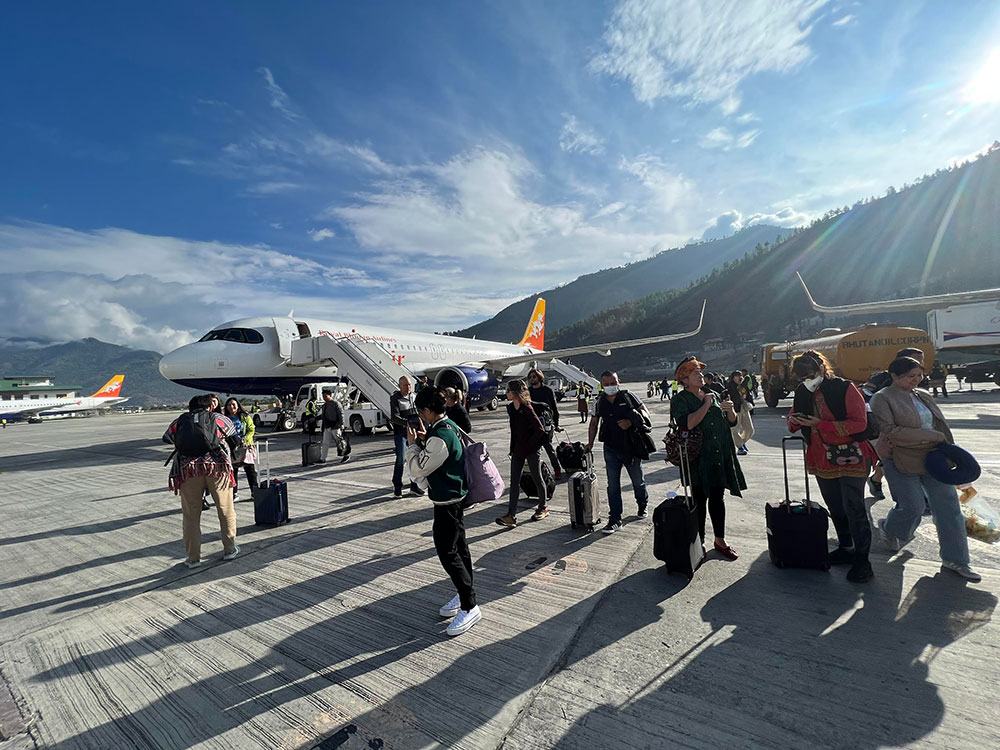In light of the recent discussions surrounding Bhutan’s tourism landscape, Hotel and Restaurant Association of Bhutan (HRAB) would like to take an objective look at the industry and the way forward.
Current Industry Status
Firstly, let us take an objective look at the current status of the industry. Since our reopening in September 2022, we have experienced remarkable growth, with each quarter and year showing significant increases. The first quarter of 2024 alone saw a staggering 100+ percent rise compared to the corresponding period in 2023, indicating a strong upward trajectory. Additionally, every month since Q1 of 2024 has seen an increase in tourist numbers compared to the previous year. We expect a continuation of an upward trajectory as we make positive changes in the industry. 2024 will probably be recorded as the best year post-covid.
Have we recovered from the Pandemic?
While these developments are promising, it is important to remain cautious and thorough in our assessment of our recovery from the pandemic, for which we need to compare our numbers with 2019. Despite the commendable progress, our numbers still fall short of pre-pandemic levels, with 2023 accounting for only 32 percent of 2019’s figures and the first quarter of 2024 accounting for 53 percent compared to 2019. The countries in the region, as per their tourist data, show 60-80 percent recovery from their pre-pandemic numbers, with few fully recovered, going past 100 percent. Bhutan is at 32 percent. The numbers are clear: Bhutan’s journey of recovery as many in the region, from the pandemic is still ongoing.
Undercutting
Secondly, as many have voiced out one of the pressing challenges we face is the issue of undercutting among service providers—the root cause of which is the low average occupancy. With a drastic drop in tourist numbers (compared to 2019) coupled with a 54 percent increase in accommodation options, our hotels are compelled to slash their rates to sustain operations. The facts are clear: On average, The supply of rooms does not correspond with the demand for it. However, the solution to this conundrum lies not in MDPR or de-liberalization but rather in boosting tourist numbers. Take, for instance, the festive seasons in Thimphu and Paro, where the demand for accommodations skyrockets, allowing hotels to maintain or even increase their rates. The lesson is clear: increased tourist footfall translates to healthier market dynamics for all and by achieving higher average occupancy, hotels can maintain their prices without the need for reductions. More tourist numbers would also equal higher taxes going to the government. Alternatively, with fewer tourists as compared to 2019 and higher numbers of accommodations, MDPR would only exacerbate the issue of undercutting. The most effective and fastest way to achieve higher tourist numbers is a concerted marketing effort by the whole industry – tour operators, hotels, guides, airlines, government departments and other stakeholders – which is only possible in a liberalized industry.
Liberalization and MDPR
The tourism sector is a collaborative ecosystem comprising farmers, taxi drivers, guides, Hotels, Tour Operators, small businesses, and a myriad of other stakeholders—all of whom benefit from its prosperity. It is only fair that the responsibility of nurturing this industry’s growth is shared equitably among all stakeholders. This means shouldering equal responsibility in promoting and taking ownership of the future of Bhutan’s tourism. When we discuss “stakeholders,” we often fail to recognize a critical group – the guests! By liberalizing the industry and taking away the MDPR, it has achieved one key element: empowering tourists to choose their service providers fostering healthy competition based on service excellence and providing them with a range of options to choose from.
Inflow of Foreign Currency and Tax Evasion
The Foreign Currency via SDF has increased, as reported by multiple papers, but there’s an ongoing discussion on the stagnant Foreign Reserve. To promote increased foreign currency inflow, we should streamline payment gateways and POS systems and focus on increasing tourist numbers. We already have the necessary platforms in Bhutan, but they lack consistent functionality. We need to encourage non-cash transactions within and outside of Bhutan and streamline the payment gateway system to improve the inflow of foreign currency. This will also make tax payments more transparent.
Challenges and Way Forward
In the industry, we face numerous challenges that cannot all be addressed in this brief article. However, we can focus on the future by working towards the following goals:
It’s crucial to develop tourism across all districts in Bhutan to enhance diversity in offerings. The focus is currently on only 5 districts (constituting 91 percent of arrivals in 2019), leading to a lack of variety. Improving air and road connectivity, streamlining payment systems, and promoting Bhutan as an all-season destination can attract a wider range of global travellers. Encouraging ambassadors in their markets and promoting special packages like MICE, treks, bird watching, and adventure can unlock untapped opportunities.
In light of the increasing global interest in Bhutan, stakeholders are missing opportunities due to a lack of online marketing knowledge. Hotels, the largest employers, need better tools and skills to deliver exceptional services. Guides are crucial for guest experiences and need enhanced skills. Bhutan’s image as a sustainable destination is conflicted by the state of roadside toilets, waste, and litter. Reinvestment of a portion of SDF is needed to train stakeholders and tackle these challenges.
We implore each of you to reflect on the collective responsibility we bear in steering Bhutan’s tourism sector towards sustainable growth. Let us leverage our strengths, address our challenges head-on, and embrace innovation as we chart a course towards a brighter future for Bhutan’s tourism. We cannot fail. We must work. We must believe.
Contributed by
Hotel and Restaurant Association of Bhutan


